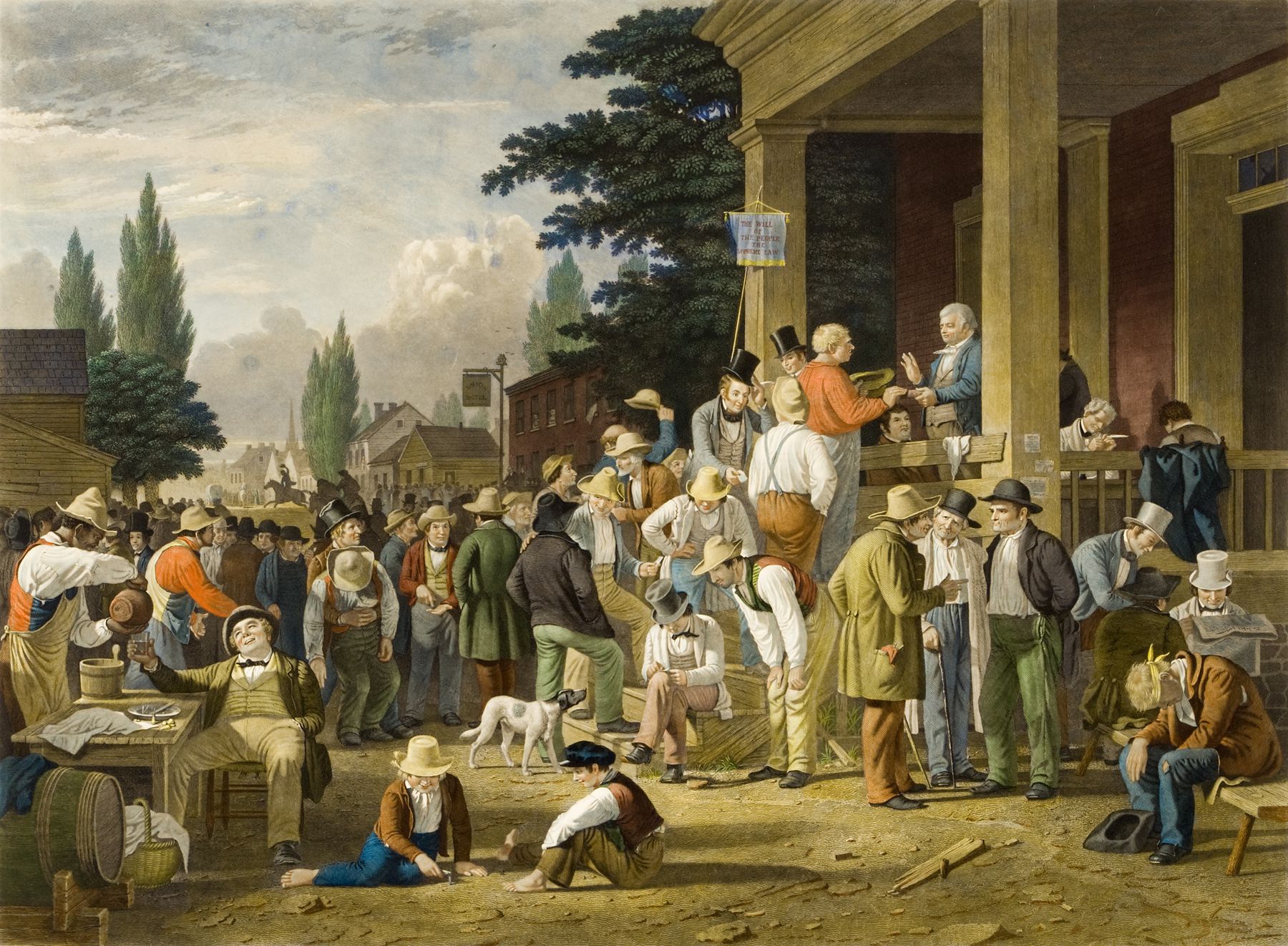This November, millions of Americans will step into polling places to cast their vote for President of the United States. Though some are predicting protests near the polls, it will be a very different scene than the polling places of the late 1800s.
“It was a bit like the Wild West,” said Illinois State University Assistant Professor of Art Vanessa Schulman. “Confusion reigned.”
Schulman and Professor of History Amy Wood discussed elections more than 150 years ago—what has changed, and what hasn’t. The two recently spoke at one of the talks for Super Tuesdays: The Culture of Voting.
The author of Work Sights: The Visual Culture of Industry in Nineteenth-Century America, Schulman studies the visual images and culture of the 1800s. She pointed to George Caleb Bingham’s painting The County Election from 1852 (See painting above). “You’ll see almost a carnival atmosphere. But look closer and you’ll see the chaos.”
The jovial colors barely mask the pervasive aura of violence and voter fraud that followed the national elections in the mid-1800s. “Votes were bought, traded, sold, and cast multiple times,” said Schulman. Men would literally stop one another from getting to the polls with an armed force to intimidate voters,” said Schulman.
After the Civil War, Congress passed the 15th Amendment to the U.S. Constitution, allowing black men the right to vote. Whether or not they could get to the polls was another question. Violence, threats, and the emergence of the Ku Klux Klan kept many black voters at home. “The right to vote very quickly evaporated in the face of extralegal means of suppression,” said Schulman. By the 1890s, intimidation gave way to restrictive voting laws as the anti-slavery Republicans retreated from the South, and Southern Democrats—usually white, former slave holders—took hold once again.
Wood noted some of the laws and acts passed in the late 19th century may sound familiar today. “They made registering to vote more arduous, for instance only allowing registration during narrow windows of time, such as during planting season, which made it difficult for sharecroppers,” she said. The acts requiring specific addresses and forms of identification are eerily reminiscent of the recent Supreme Court ruling for a North Carolina law that required specific identification to vote. “You can understand why courts today are so suspicious, because it all sounds so familiar,” said Wood.
Wood, the author of Lynching and Spectacle: Witnessing Racial Violence in America, 1890-1940, noted that from 1890 to 1910 the flurry of new acts in state constitutions worked to disenfranchise—or the pull back of voting rights of—black voters. The efforts emerged in part as a way to stop blacks from voting Republican or turning to a third party, the Populists, who represented the interests of small farmers. “The Populists represented a danger to white, Southern Democrats, dominated by a minority class of planter elite, who held sway in the South,” said Wood. “In response, there were a rush of amendments to state constitutions meant to get around the 15th Amendment through tactics like poll taxes, property requirements, and literacy laws.”
Many Southern Democrats declared that the laws were necessary as a way to clean up corruption, noted Wood. “These were defended as a form of reform to stop electoral fraud. So it sounded as though they were taking the moral high ground. When, in fact, it was about racial and class politics.”
Southern Democrats passed laws that looked race-neutral on the surface, but targeted African Americans, said Wood. “Poll taxes and literacy laws might also disenfranchise poor whites. So states passed grandfather clauses, meaning if your grandfather could vote, you could vote. This allowed poor whites to vote, while disenfranchising African Americans, whose grandfathers would have been slaves.” Or they passed “understanding clauses,” meaning if one could not read, one could still vote if one could interpret a passage from the Constitution. Wood called these tests subjective. “You can guess how many African Americans were allowed to pass the test—none,” she said.
By 1940, only 3 percent of the African American population in the South were registered to vote. This would begin to change with the Supreme Court rulings beginning in the 1940s and finally with the Voting Rights Act in 1965. Yet, according to Wood, decades of federal neglect had left its toll. “The federal government was largely AWOL at a time when a desire for national unity muted any federal response, and left African Americans with no recourse. Disenfranchisement could not have happened without federal acquiescence.”



